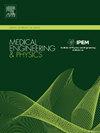三维轮廓感知U-Net用于磁共振成像中直肠肿瘤的高效分割
IF 2.3
4区 医学
Q3 ENGINEERING, BIOMEDICAL
引用次数: 0
摘要
磁共振成像(MRI)作为一种非侵入性的检测手段,对直肠癌的临床诊断和治疗方案至关重要。然而,由于直肠肿瘤信号在MRI中的对比度较低,分割往往不准确。在本文中,我们提出了一种新的基于t2加权MRI图像的直肠肿瘤三维分割方法cac - net。该方法采用卷积神经网络从MRI图像中提取多尺度特征,并使用轮廓感知解码器和注意融合块(AFB)进行轮廓增强。我们还引入了对抗约束来提高增强性能。此外,我们构建了108个MRI-T2体积的数据集,用于局部晚期直肠癌的分割。最后,cac - net的DSC为0.7112,ASD为2.4707,优于其他先进的方法。在该数据集上进行的各种实验表明,cauc - net在直肠肿瘤分割中具有较高的准确率和效率。综上所述,所提出的方法具有重要的临床应用价值,可以为直肠癌的医学图像分析和临床治疗提供重要的支持。随着进一步的发展和应用,该方法具有提高直肠癌诊断和治疗准确性的潜力。本文章由计算机程序翻译,如有差异,请以英文原文为准。
3-D contour-aware U-Net for efficient rectal tumor segmentation in magnetic resonance imaging
Magnetic resonance imaging (MRI), as a non-invasive detection method, is crucial for the clinical diagnosis and treatment plan of rectal cancer. However, due to the low contrast of rectal tumor signal in MRI, segmentation is often inaccurate. In this paper, we propose a new three-dimensional rectal tumor segmentation method CAU-Net based on T2-weighted MRI images. The method adopts a convolutional neural network to extract multi-scale features from MRI images and uses a Contour-Aware decoder and attention fusion block (AFB) for contour enhancement. We also introduce adversarial constraint to improve augmentation performance. Furthermore, we construct a dataset of 108 MRI-T2 volumes for the segmentation of locally advanced rectal cancer. Finally, CAU-Net achieved a DSC of 0.7112 and an ASD of 2.4707, which outperforms other state-of-the-art methods. Various experiments on this dataset show that CAU-Net has high accuracy and efficiency in rectal tumor segmentation. In summary, proposed method has important clinical application value and can provide important support for medical image analysis and clinical treatment of rectal cancer. With further development and application, this method has the potential to improve the accuracy of rectal cancer diagnosis and treatment.
求助全文
通过发布文献求助,成功后即可免费获取论文全文。
去求助
来源期刊

Medical Engineering & Physics
工程技术-工程:生物医学
CiteScore
4.30
自引率
4.50%
发文量
172
审稿时长
3.0 months
期刊介绍:
Medical Engineering & Physics provides a forum for the publication of the latest developments in biomedical engineering, and reflects the essential multidisciplinary nature of the subject. The journal publishes in-depth critical reviews, scientific papers and technical notes. Our focus encompasses the application of the basic principles of physics and engineering to the development of medical devices and technology, with the ultimate aim of producing improvements in the quality of health care.Topics covered include biomechanics, biomaterials, mechanobiology, rehabilitation engineering, biomedical signal processing and medical device development. Medical Engineering & Physics aims to keep both engineers and clinicians abreast of the latest applications of technology to health care.
 求助内容:
求助内容: 应助结果提醒方式:
应助结果提醒方式:


